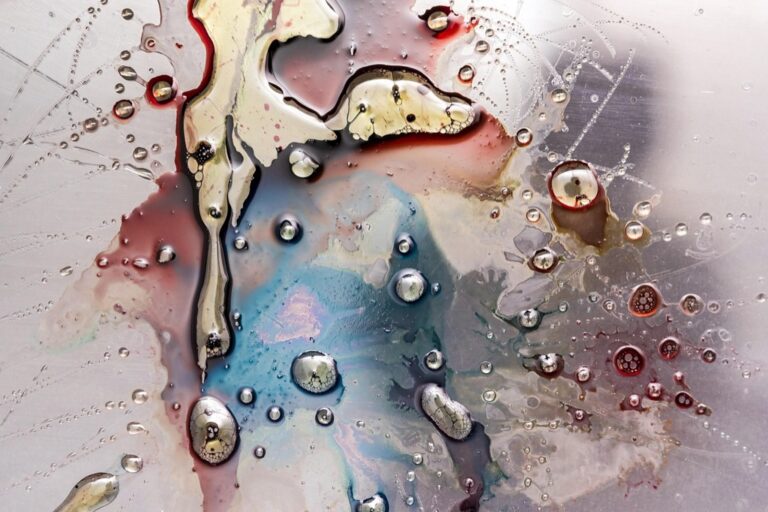5 Ideas for Crafting Legends for Narrative Maps That Tell Stories
You’re staring at your beautifully designed narrative map but something’s missing – a legend that actually tells the story you want to share. Most cartographers focus on technical accuracy and forget that legends serve as the bridge between raw geographic data and compelling storytelling.
The difference between a forgettable map and one that captivates your audience often comes down to how well you craft your legend to support your narrative’s core message.
Disclosure: As an Amazon Associate, this site earns from qualifying purchases. Thank you!
Create Color-Coded Character Legends That Tell Personal Stories
Character-based legends transform standard map symbols into compelling visual narratives that guide readers through complex storylines. You’ll discover how strategic color assignments and visual elements can make your narrative maps more engaging and memorable.
Assign Unique Colors to Each Major Character’s Journey
Choose distinct hues that reflect each character’s personality and role in your story. Red often works well for protagonists with passionate or aggressive traits, while blue suits calm or melancholic characters. Green represents growth or nature-connected individuals, and purple indicates mystery or nobility.
Maintain consistent color saturation levels across all character representations to ensure visual harmony. You should avoid using colors that are too similar—ensure at least 30% difference in hue values when working with digital mapping tools like ArcGIS or QGIS.
Include Character Portraits and Key Personality Traits
Position small character portraits directly within your legend alongside brief trait descriptions. Use 40×40 pixel thumbnails for digital maps or 0.5-inch squares for print versions to maintain readability without overwhelming the map space.
List 2-3 key personality traits beneath each portrait using concise descriptors like “cunning strategist” or “loyal protector.” These text elements should use 8-10 point fonts in mapping software and connect directly to the character’s journey paths on your main map visualization.
Design Visual Symbols That Reflect Character Development Arcs
Create progressive symbol variations that show character evolution throughout your narrative timeline. Start with simple geometric shapes like circles or triangles, then modify line weights, fill patterns, or add decorative elements as characters develop.
Use dashed lines for uncertain character paths and solid lines for confirmed routes. You can implement symbol scaling where larger symbols represent increased importance or power, while transparency effects show character fade-outs or deaths in your story progression.
Develop Timeline-Based Legends for Sequential Story Events
Timeline-based legends transform your narrative maps into temporal storytelling tools. You’ll guide readers through story progression by creating visual frameworks that mirror chronological development.
Mark Crucial Plot Points with Chronological Markers
Position numbered markers at locations where significant events occur throughout your narrative. Use distinct geometric shapes like diamonds for climactic moments, circles for character introductions, and squares for conflict resolution points. Connect these markers with dotted lines to establish clear temporal relationships between events. Include brief descriptive text alongside each marker to provide context without overwhelming the map’s visual hierarchy.
Use Progressive Visual Elements to Show Story Progression
Implement gradient color schemes that shift from light to dark tones as your story advances chronologically. Start with pale blues for opening scenes and transition to deeper hues for climactic moments. Vary symbol sizes progressively – begin with smaller icons for early events and scale up to larger symbols for major plot developments. This visual scaling creates immediate recognition of story importance and temporal flow.
Incorporate Date Stamps and Event Descriptions
Add precise temporal anchors using standardized date formats alongside location markers on your map. Position brief event descriptions in consistent text boxes that maintain uniform font sizes and spacing. Include key details like character names, action verbs, and outcome summaries within 10-15 words per description. Organize these elements in chronological order within your legend to create a readable timeline reference that complements the spatial narrative.
Design Symbolic Location Legends That Enhance World-Building
Your symbolic location legends serve as the visual vocabulary that transforms abstract geographic data into immersive narrative experiences.
Create Custom Icons for Different Types of Locations
Design distinctive symbols that immediately communicate each location’s purpose and significance. You’ll want to develop unique icons for taverns, temples, battlefields, and magical sites rather than relying on generic mapping symbols. Use consistent line weights and artistic styles across all custom icons to maintain visual cohesion. Consider incorporating story-specific elements like faction colors or mystical symbols that reflect your world’s unique characteristics. Test your icons at different scales to ensure they remain recognizable when reduced for smaller maps.
Include Cultural and Historical Context for Each Place
Embed rich backstory details directly within your legend entries to deepen reader engagement. Add brief historical notes like “Founded 847 A.D.” or cultural descriptors such as “Sacred burial ground of the Northern Clans” beneath each location symbol. Include population estimates, governing bodies, or notable residents when relevant to your narrative. Use consistent formatting with standardized abbreviations and date systems throughout your legend. Limit descriptions to 2-3 concise phrases per location to maintain readability while providing essential world-building context.
Use Artistic Elements That Match Your Story’s Tone
Align your legend’s visual style with your narrative’s mood and genre conventions. Choose weathered, hand-drawn aesthetics for medieval fantasy settings or clean, geometric designs for futuristic sci-fi worlds. Apply consistent color palettes that reflect your story’s emotional atmosphere—warm earth tones for pastoral adventures or stark metallics for dystopian tales. Incorporate decorative borders, typography choices, and texture effects that reinforce your world’s cultural influences. Maintain stylistic consistency between your legend design and the main map elements for professional cohesion.
Build Interactive Legend Elements for Reader Engagement
Interactive legends transform static map references into dynamic storytelling tools that actively engage your readers with the narrative content.
Add Clickable Features That Reveal Hidden Story Details
Design clickable legend symbols that unlock additional narrative layers when selected. You’ll create expandable sections containing character backstories, location histories, or plot secrets that readers discover through exploration. Use JavaScript libraries like Leaflet or D3.js to implement toggle functions that show detailed descriptions, related events, or character connections. This approach transforms your legend from a simple reference tool into an active discovery mechanism that rewards curious readers.
Include Pop-Up Descriptions for Enhanced Immersion
Implement modal windows or overlay descriptions that appear when readers interact with legend elements. You’ll provide rich contextual information without cluttering the main legend space, including atmospheric details, sensory descriptions, or cultural significance. Configure these pop-ups to display character dialogue, historical context, or world-building elements that deepen narrative immersion. Use consistent formatting and styling that matches your overall map design while ensuring text remains readable across different screen sizes.
Design Hover Effects That Provide Additional Context
Create subtle visual feedback through CSS transitions and hover states that preview information before full interaction. You’ll use color changes, scaling effects, or preview text snippets that appear when users move their cursor over legend items. Implement these effects with smooth animations lasting 200-300 milliseconds to maintain professional polish. This preview functionality helps readers understand what additional content awaits while maintaining the legend’s primary navigation function without overwhelming the interface.
Integrate Thematic Legend Systems That Reflect Story Mood
Your legend’s visual presentation should mirror the emotional atmosphere of your narrative, creating a cohesive experience that reinforces the story’s tone through deliberate design choices.
Choose Color Palettes That Match Your Narrative Tone
Select color schemes that evoke your story’s emotional landscape through psychological associations. Dark fantasy narratives benefit from muted grays and deep crimsons, while adventure tales thrive with warm earth tones and vibrant blues. Avoid high-contrast combinations that clash with your story’s mood—instead, choose harmonious palettes that support reader immersion and maintain visual consistency throughout your legend system.
Select Typography That Complements Your Story’s Era
Choose fonts that align with your narrative’s historical period and cultural setting. Medieval fantasy maps work best with serif fonts like Trajan Pro or custom calligraphy styles, while modern thrillers benefit from clean sans-serif options like Helvetica or Futura. Ensure your typography remains legible at various scales and consider font weight variations to establish hierarchy within your legend entries.
Use Visual Metaphors That Reinforce Central Themes
Design legend elements that symbolically represent your story’s core concepts through visual metaphors. Mystery narratives might use keyhole shapes for important locations, while journey stories could employ compass roses or path motifs. Create custom icon sets that reflect thematic elements—broken chains for freedom stories or intertwined vines for romance narratives—ensuring these metaphors enhance rather than obscure your legend’s functionality.
Conclusion
Your narrative map’s legend serves as the bridge between raw geographic data and compelling storytelling. By implementing these five crafting strategies you’ll transform standard cartographic elements into powerful narrative tools that guide readers through your story’s world.
Remember that effective legend design requires balancing visual appeal with functional clarity. Whether you’re developing character-based symbols timeline markers or interactive elements each choice should enhance rather than complicate your reader’s journey through the narrative landscape.
The key lies in aligning your legend’s visual language with your story’s tone and themes. When done thoughtfully your map legend becomes an integral part of the storytelling experience drawing readers deeper into the world you’ve created while providing them with the tools they need to navigate it successfully.
Frequently Asked Questions
Why are legends important in narrative maps?
Legends are crucial for connecting geographic data to storytelling and engaging audiences effectively. While many cartographers focus on technical accuracy, a well-crafted legend determines how successfully a map supports the central narrative message. Without proper legends, even the most detailed maps can fail to communicate their story to readers.
What are character-based legends and how do they work?
Character-based legends transform standard map symbols into compelling visual narratives by using strategic color assignments to represent each major character’s journey. Each character receives distinct hues that reflect their personalities, with consistent color saturation and avoiding similar colors for visual harmony. Small character portraits and key personality traits are included alongside visual symbols.
How do timeline-based legends enhance narrative maps?
Timeline-based legends turn maps into temporal storytelling tools by marking crucial plot points with numbered markers at significant locations. They use distinct geometric shapes for different event types, connected with dotted lines to show temporal relationships. Progressive visual elements like gradient colors and varying symbol sizes represent story progression chronologically.
What makes symbolic location legends effective for world-building?
Symbolic location legends create a visual vocabulary that transforms abstract geographic data into immersive experiences. They feature custom icons for different location types (taverns, magical sites) with consistent line weights and artistic styles. Cultural and historical context is embedded within legend entries through concise descriptions that maintain readability.
How can interactive legend elements improve reader engagement?
Interactive legends transform static map references into dynamic storytelling tools through clickable features that reveal hidden story details. Using JavaScript libraries like Leaflet or D3.js, they include pop-up descriptions with rich contextual information and hover effects that provide additional context through subtle visual feedback without cluttering the interface.
What are thematic legend systems and why do they matter?
Thematic legend systems reflect the story’s mood through deliberate design choices that create cohesive experiences. They use color palettes that evoke the narrative’s emotional landscape, typography that aligns with the story’s historical period, and visual metaphors in legend elements to reinforce central themes through custom icon sets.
How should colors be chosen for narrative map legends?
Colors should be strategically assigned to represent characters’ personalities and the story’s emotional landscape. Use distinct hues for different characters while maintaining consistent saturation levels. Avoid similar colors to prevent confusion, and select harmonious color schemes that support reader immersion and align with the narrative’s mood and atmosphere.
What role does typography play in narrative map legends?
Typography in legends should align with the narrative’s historical period and genre conventions while ensuring legibility at various scales. Font choices should complement the story’s tone and maintain stylistic consistency throughout the map. Proper typography enhances the overall thematic experience and supports the legend’s functionality as a storytelling tool.




